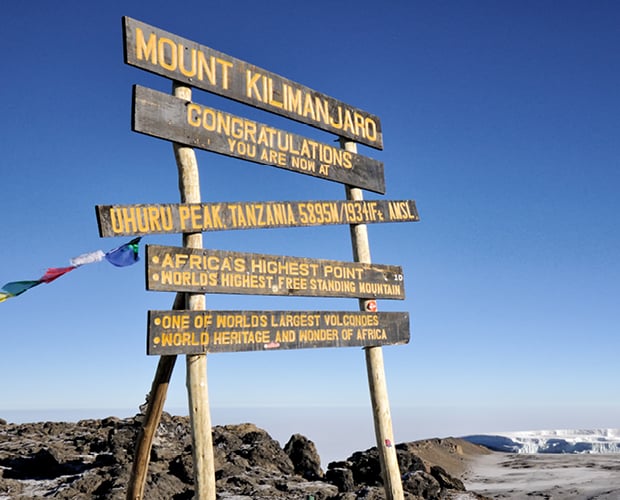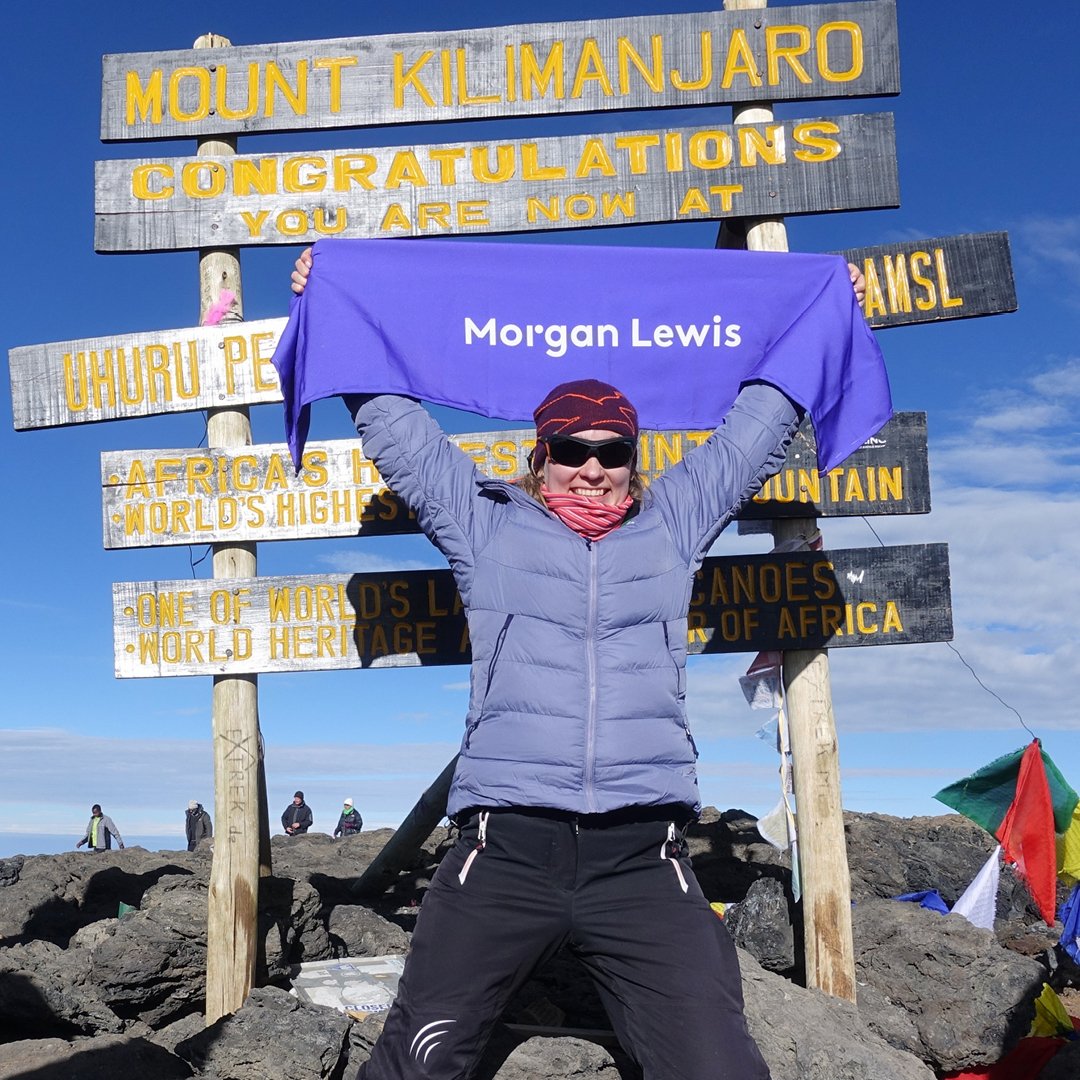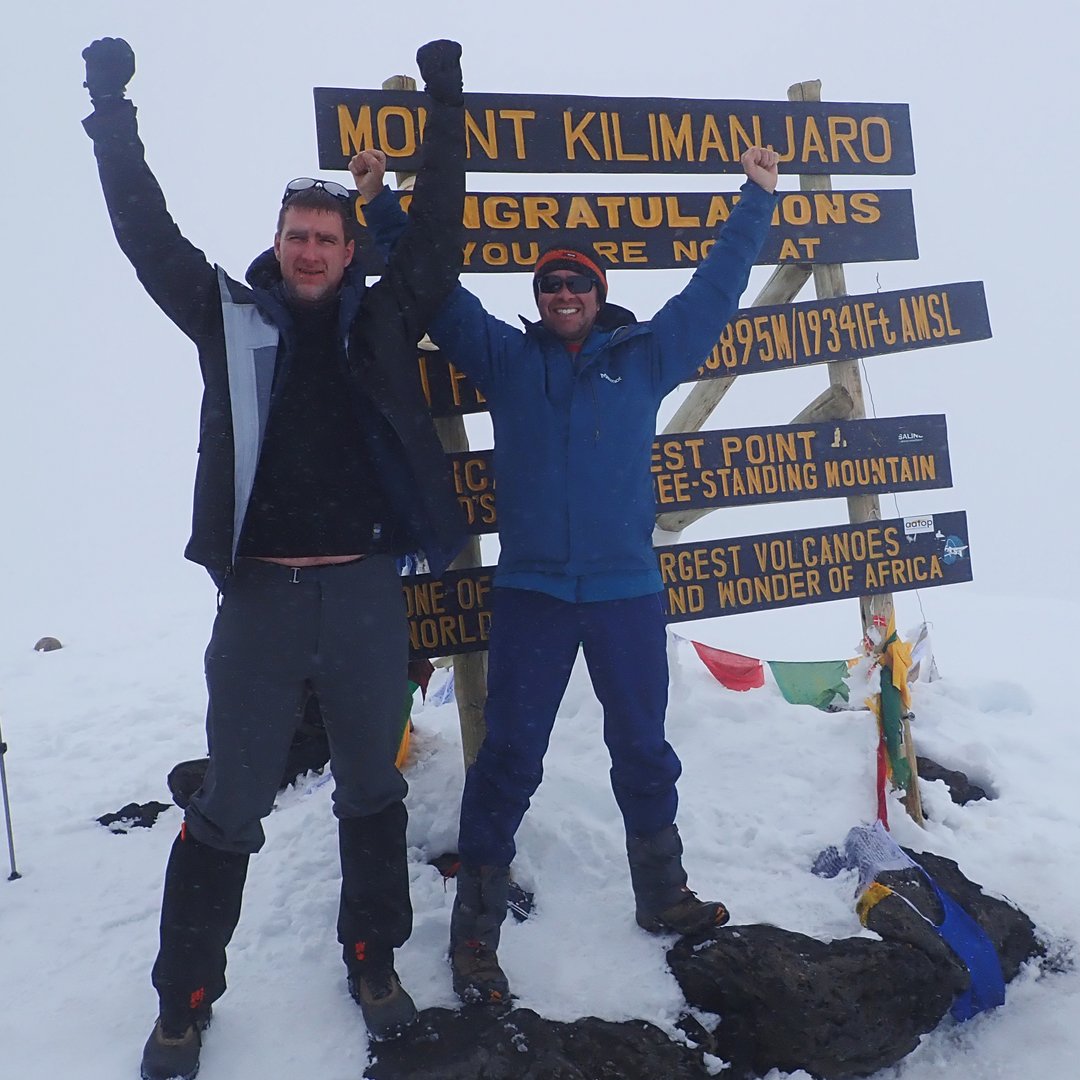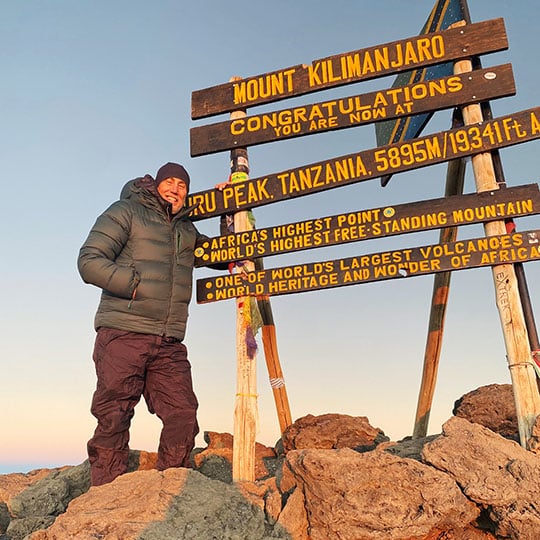Climbing to New Heights
05. Dezember 2022
When Morgan Lewis partner Scott Schutte summited Mt Kilimanjaro (or Kili for those in the know) in September 2022, it ignited a friendly competition throughout the firm among fellow climbers. Dubai partner Anastasia Dergacheva, Philadelphia Chief Information Officer Steve Naphy, and Chicago partner Scott Schutte all share their experiences making it to the top of the highest single free-standing mountain above sea level in the world.
Anastasia Dergacheva
When did you climb Mt Kilimanjaro?January 1, 2018. We started our final ascent at midnight on January 1. Literally, the most memorable New Year ever.
How long did it take you to reach the summit?It was a classic five days up, two days down route. The final ascent was about eight hours.
How long did you train for and how much time per week did you train?I did not train at all. I did Everest base camp track a year before and figured I can do this without much preparation.
What was your most memorable part of the trip?Two, really. First, as you can imagine, there were a lot of people who wanted to do the summit on January 1, so for the first five hours of the ascent we just worked our way up in an endless queue of climbers with their headlights on, much like a giant ant colony on a mission. At some point, around 4:00 or 5:00 am, I completely lost myself in this queue. I had a feeling that this will never, ever end, and I will always be climbing up in this line in darkness for the rest of my life. But then, and this is my second one, the sun started rising behind me. I turned around and I saw this bright orange disk and pearly white clouds so far beneath me that you feel you are literally on top of the world. This one I will never forget.
Why did you start climbing?I did not have a lot of climbing experience. I did few mountain hikes when I was younger and then I did Everest base camp track in 2016. On the mountain, you usually don’t have any cell phone coverage, which makes it so much easier to let go of your smart phone (I actually left mine at home when we did Kili). So any hike or climb becomes a perfect meditation. You usually push yourself to your limit so your thoughts boil down to “get to the next camp,” “eat something (does not matter what),” or “get some sleep.” There is no time to worry, no time to overthink, no fear of missing out, your mind goes blank, and you concentrate on your basic needs. And all those problems of the real world just fade away.
What was your toughest climb?Kili was probably the toughest one as it was the longest one in one day: we started at midnight and we got back to the camp only around 4:00 pm.
Any advice for those thinking about climbing?Get good gear, find good company, and open your mind to whatever is coming your way. Uncomfortable boots, a nasty person in your group, or laser focus on a specific result might easily steal your perfect mountain climb. At the end of the day, it’s the great memories and not badges, photos, or checks in your checklist that will stay with you forever.

Steve Naphy
When did you climb Mt Kilimanjaro?I summited with my brother, his wife, and four others (and a small army of porters) on March 12, 2018.
How long did it take you to reach the summit?We took a route called the Western Approach, which was seven days up and two days down. The Western Approach is claimed to produce a 95% success rate of summitting. On summit day, it took nine and a half hours to ascend the final 4,000 vertical feet in the remnants of the four feet of snow that fell two weeks prior.
How long did you train?A little over six months. I did not have the time for long training sessions. Therefore, I was the weird guy in the gym with long pants, boots, a breathing restrictor, and a loaded backpack climbing the rolling staircase in the gym for an hour, three to four times a week, for six months.
What was your most memorable part of the trip?I was humbled by the porters who carried twice the weight we carried, essentially ran past us in double time, all while wearing clothing that was likely not keeping them dry or warm enough. Those humble porters overshadowed the fitness of the marathon and Ironman competitors in our group of seven participants. The summit itself was anticlimactic, as we were in dense cloud cover and could not see 100 meters.
Why did you start climbing?I’m not a climber. My brother wanted to do something big for his 50th birthday. When Glenn says, “Meet me in Africa,” you go—you just go.
What was your toughest climb?Kili was really my only significant climb. I had never been higher than 11,000 feet before and that was skiing.
Any advice for those thinking about climbing?If you are an adrenaline junkie, this will not satisfy that desire. It is a very long and very slow marathon. Don’t go in March—they call it the rainy season for a reason.

Scott Schutte
When did you climb Mt Kilimanjaro?September 2022.
How long did it take you to reach the summit?We did the longer and slightly harder five-day route that had the benefit of added time for acclimating to the high altitude.
How long did you train for and how much time per week do you train?I typically work out five or six days per week. For Kili, I added more weight workouts focused on my glutes, hikes at the Indiana Dunes (which is the closest thing we have to steep hills near Chicago), and long weekend days with five to six hours on my feet running, hiking, and/or biking.
What was your most memorable part of the trip?Seeing the sun rise from the top of Africa and spending time with Tanzanian guides and getting a new perspective on climbing (and life).
Why did you start climbing?I started in 1995 when I happened to meet a guy at a Chicago climbing gym who was a law professor who spent his summers guiding out of Rocky Mountain National Park. Since then, I’ve done technical routes on 17 of the Colorado 14,000-feet peaks; Orizaba (Mexico); Aconcagua (South America); and Mt. Rainier. My favorite part of climbing are the long summit days where we typically start climbing by midnight so that we can summit before the sun rises and avalanche danger increases—there is something really calming about climbing through the night by headlamp and being very high as the sun starts to rise.
What was your toughest climb?My first technical climb was the Kieners Route on Longs Peak in 1995. I did not know what to expect, and I learned the hard way that reaching the summit is only half of the effort. We had some deep snow issues and were out for 22 hours. The descent was miserable.
Any advice for those thinking about climbing?Train, train, and train. The technical skills (glacier travel, use of an ice axe, climbing on a rope) are relatively easy to pick up, but you can’t fake strong glutes or time spent on your legs (running, biking, rucking). Also, if you are doing a multi-day climb, make sure you are comfortable sleeping in a tent (sometimes with a stranger) for several days.
